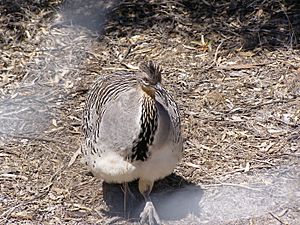Charles Darwin Reserve facts for kids
Charles Darwin Reserve is a special nature reserve in Western Australia. It's a big area of land where nature is protected. It helps keep many unique plants and animals safe.
About the Reserve
This reserve is about 90 km from Wubin. It is also 355 km north of Perth, a major city. The reserve is mostly in a special plant area called the Southwestern Botanical Province. Some parts reach into the Eremean Province.
Bush Heritage Australia (BHA) owns and manages the reserve. They bought it in 2003 and gave it its current name. A big part of the money for buying the reserve came from Chris Darwin. He is the great-great-grandson of the famous scientist Charles Darwin. The reserve covers a huge area of 686 square kilometers. Before it became a reserve, it was part of a large farming property called Whitewells Station.
Amazing Nature and Wildlife
The reserve has a semi-arid Mediterranean climate. This means it's quite dry, with an average of 282 mm of rain each year. Most of the rain falls in winter. The land protects special York gum and Salmon gum woodlands. It also has areas of heath and sand-plains.
The old trees in the woodlands are very important. They have natural holes called tree-hollows. Many animals use these hollows as homes. Birds you might see here include malleefowl and Australian bustards. You can also spot Major Mitchell's cockatoos and peregrine falcons. Other birds are crested bellbirds and the white-browed babbler. Mammals living here include short-beaked echidnas. You might also see euros and red kangaroos hopping around.
Why This Area is Important for Birds
The Charles Darwin Reserve is part of a much larger area. This area is called the Mount Gibson and Charles Darwin Important Bird Area (IBA). It covers 2335 square kilometers. BirdLife International has named it an IBA. This means it's a very important place for birds.
It's especially important because it's home to malleefowl and western corellas. These birds need specific types of habitats to survive. The IBA also protects several other bird species. These birds live only in dry or mallee areas.


